--
Kingman, Arizona
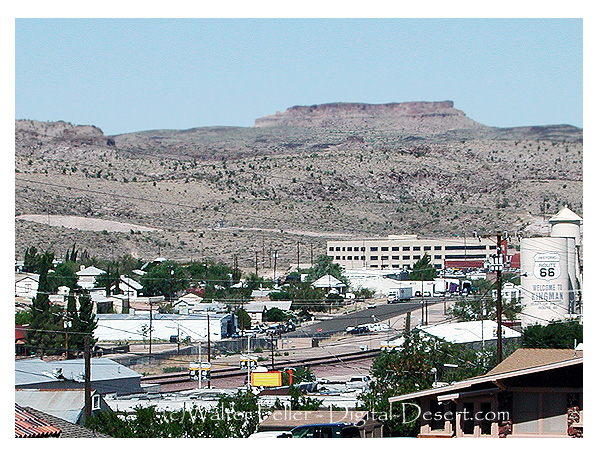
Kingman 2014
Kingman, Arizona, was founded in 1882, when Arizona was only Arizona Territory. Situated in the Hualapai Valley between the Cerbat and Hualapai mountain ranges, Kingman is known for its very modest beginnings as a simple railroad siding near Beale's Springs in the Middleton Section along the newly-constructed route of the Atlantic and Pacific Railroad. The city of Kingman was named for Lewis Kingman, who surveyed along the Atlantic and Pacific Railroad's right-of-way between Needles, Ca., and Albuquerque, N.M. Lewis Kingman supervised the building of the railroad from Winslow, Ariz. to Beale's Springs, which is near the present location of the town of Kingman.
Kingman, Arizona is situated in the scenic Hualapai Valley between the Cerbat and Hualapai mountain ranges. Founded in 1882 as an Atlantic and Pacific Railroad town, the city was named for railroad surveyor Lewis Kingman. Christened as the Mohave County seat in 1887, it grew into an important supply and shipping center for miners and ranchers in western Arizona.
The commercial district that defined the town included the impressive Hotel Beale (319-327 Andy Devine Ave.), a two-story building built in 1899 of local stone and brick. In 1907, a substantial, stylish Mission Revival railroad depot was built after fires twice destroyed earlier, wood-and-concrete depots. That same year, the Hotel Brunswick (313-315 Andy Devine Ave.) was built to provide another lodging option.
Early businesses marketed goods and services to both local and visiting populations and thrived during Kingmans first decades. Built in 1888 and doubled in size by 1908, the Luthy Block (409 Andy Devine Ave.) occupied a prominent corner location and became the retail anchor of the business district. In 1899, Ed Thompsons Saloon (323 and 331 Andy Devine Ave.) joined the hotels as a place for locals and travelers to drink and socialize. By the 1910s, roads and automobiles competed with the railroad for importance in Kingman. In 1914, the local section of the National Old Trails Road was officially marked through town. In a nod to the routes significance, the owner of Ed Thompsons Saloon renamed it Old Trails Saloon the same year.
With increased automobile traffic, Kingmans commercial core expanded away from the depot along Front Street (later Andy Devine Ave.) to the east and west and Beale Street to the north. The Old Trails Garage (307 and 308 Andy Devine Ave.) was established on Front Street in 1915 and represents the changing commercial emphasis to automobile repairs and sales. It was the largest and most complete automobile service garage in Kingman for many years. The John Mulligan Building (301-305 Andy Devine Ave.) was built in 1922. Its concrete construction, horizontal bands, and Mission Revival parapet echoed the earlier Luthy Block and reflected local efforts to create a cohesive feel for the downtown district, partly to appeal to California-bound automobile tourists.
Route 66s original 1926 course followed the National Old Trails Road through Kingman. The new federal highway boosted the towns economy, as did other important federal activities that took place through the 1930s and 1940s. This included construction of the nearby Hoover Dam from 1931 to 1936, which once again inspired the renaming of the original Ed Thompson Saloon to the Gateway Caf in reference to the towns relationship to the dam. Military installations proliferated during World War II, and an airfield was established a few miles east of town bringing with it an influx of new residents and business. Route 66 facilitated the shipment of tungsten to Kingman for use in military applications.
An era ended for Kingman when construction of Interstate 40 was completed, drawing through-traffic away from Route 66 and the downtown area. After a period of decline, the district is slowly experiencing revitalization. Acknowledging its historic significance, the National Park Service included the Kingman Commercial Historic District in the National Register of Historic Places in 1986. The National Park Service Route 66 Corridor Preservation Program also provided grant support for work on the Old Trails Garage Building, and just outside the district the historic Powerhouse has been restored as a visitor center.
The Kingman Commercial Historic District encompasses nine properties on the 300 and 400 blocks of East Andy Devine Ave. in Kingman, AZ.
The Hotel Brunswick is located at at 315 East Andy Devine Ave
from:
NPS -- https://www.nps.gov/places/kingman-commercial-historic-district.htm
Kingman Weather

Bonelli House
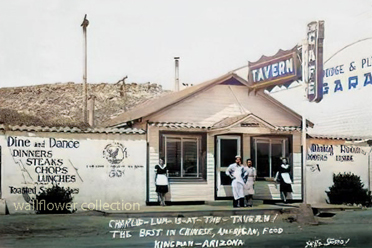
Historic Photos
Beale Springs
Hualapai Mountain Park
Santa Fe Locomotive No. 3759
Mohave Museum
Powerhouse Museum
National Old Trails RoadHoover Dam
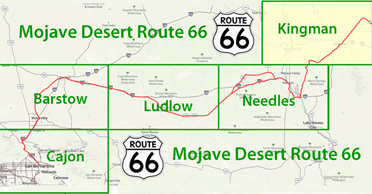
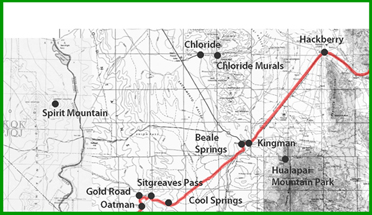
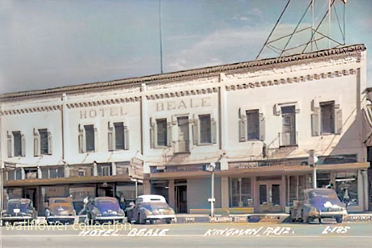
Beale Hotel
The Beale Hotel in Kingman, Arizona, holds significant historical value, particularly in relation to Route 66 and Andy Devine.
Route 66 Connection:
Route 66, often referred to as the "Mother Road," played a crucial role in American history, serving as a primary route for those migrating west, especially during the Dust Bowl of the 1930s. Kingman, Arizona, is one of the cities through which Route 66 passed, and the Beale Hotel, located in downtown Kingman, became an important stop for travelers. The hotel's proximity to this iconic route contributed to its popularity and success in the early to mid-20th century.Andy Devine:
Andy Devine was a famous actor known for his roles in Western films and was a native of Kingman. His association with the city and the Beale Hotel has added to the historical allure of the location. Devine's legacy in Kingman is significant, with his name being attached to one of the main thoroughfares (Andy Devine Avenue), which is also part of the historic Route 66 pathway through the city. The Beale Hotel, along with other historic buildings in Kingman, represents the rich cultural and historical tapestry of the area, including its connection to famous personalities like Andy Devine.The Beale Hotel itself, established in the early 20th century, is a representation of the era's architecture and has served various roles over the years, from a luxurious hotel to different commercial purposes. Its historical significance is also tied to the economic and social development of Kingman, especially during the heyday of Route 66 when the town was a bustling stopover for travelers heading west.
Preservation efforts and historical interest in Route 66 have led to a renewed interest in the Beale Hotel and other historic structures in Kingman, as they embody the spirit and history of one of America's most famous roads.